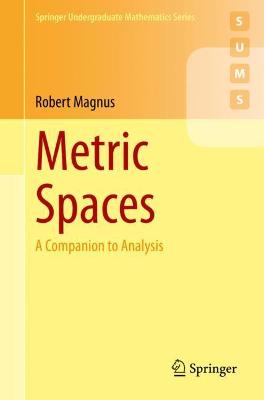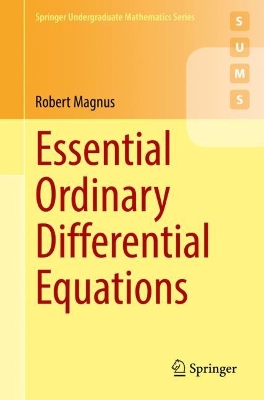Springer Undergraduate Mathematics
3 total works
Historically, it was the precise description of real numbers and the correct definition of limit that placed analysis on a solid foundation. The book therefore begins with these crucial ideas and the fundamental notion of sequence. Infinite series are then introduced, followed by the key concept of continuity. These lay the groundwork for differential and integral calculus, which are carefully covered in the following chapters. Pointers for further study are included throughout the book, and for the more adventurous there is a selection of "nuggets", exciting topics not commonly discussed at this level. Examples of nuggets include Newton's method, the irrationality of , Bernoulli numbers, and the Gamma function.
Based on decades of teaching experience, this book is written with the undergraduate student in mind. A large number of exercises, many with hints, provide the practice necessary for learning, while the included "nuggets" provide opportunities to deepen understanding and broaden horizons.
The book covers the main topics of metric space theory that the student of analysis is likely to need. Starting with an overview defining the principal examples of metric spaces in analysis (chapter 1), it turns to the basic theory (chapter 2) covering open and closed sets, convergence, completeness and continuity (including a treatment of continuous linear mappings). There is also a brief dive into general topology, showing how metric spaces fit into a wider theory. The following chapter is devoted to proving the completeness of the classical spaces. The text then embarks on a study of spaces with important special properties. Compact spaces, separable spaces, complete spaces and connected spaces each have a chapter devoted to them. A particular feature of the book is the occasional excursion into analysis. Examples include the Mazur–Ulam theorem, Picard’s theorem on existence of solutions to ordinary differential equations, and space filling curves.
This text will be useful to all undergraduate students of mathematics, especially those who require metric space concepts for topics such as multivariate analysis, differential equations, complex analysis, functional analysis, and topology. It includes a large number of exercises, varying from routine to challenging. The prerequisites are a first course in real analysis of one real variable, an acquaintance with set theory, and some experience with rigorous proofs.
The book begins with a thorough treatment of linear differential equations, including general boundary conditions and Green’s functions. The next chapters cover separable equations and other problems solvable by quadratures, series solutions of linear equations and matrix exponentials, culminating in Sturm–Liouville theory, an indispensable tool for partial differential equations and mathematical physics. The theoretical underpinnings of the material, namely, the existence and uniqueness of solutions and dependence on initial values, are treated at length. A noteworthy feature of this book is the inclusion of project sections, which go beyond the main text by introducing important further topics, guiding the student by alternating exercises and explanations. Designed to serve as the basis for a course for upper undergraduate students, the prerequisites for this book are a rigorous grounding in analysis (real and complex), multivariate calculus and linear algebra. Some familiarity with metric spaces is also helpful. The numerous exercises of the text provide ample opportunities for practice, and the aforementioned projects can be used for guided study. Some exercises have hints to help make the book suitable for independent study.


